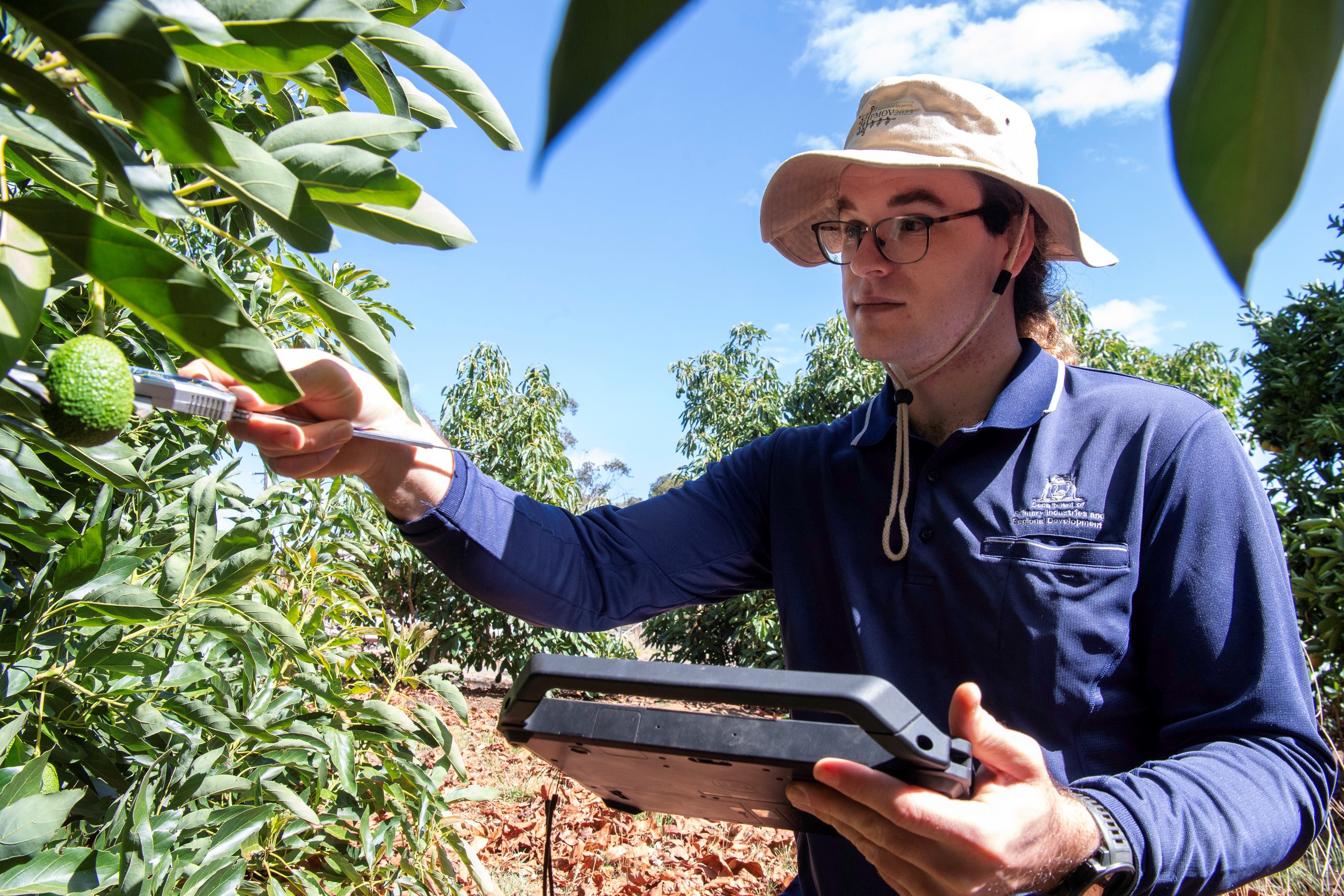
The Department of Primary Industries and Development (DPIRD) research has found strategic orchard thinning will deliver more consistent supplies of premium quality fruit.
The research was part of the six year Avocado Industry Capacity Building project, co-funded by DPIRD and Hort Innovation Australia, to support the fledging industry’s development.
While annual production fluctuates significantly, an average of about 40,000 tonnes of WA avocados is produced each year, worth more than $200 million, with volumes expected to grow as one third of orchards mature and come online in the next few years.
A three year DPIRD trial at a Manjimup commercial avocado property tested three thinning alternatives, which significantly reduced fruit inconsistency through strategic and quantified crop manipulation.
DPIRD research scientist Declan McCauley said fruit thinning significantly reduced alternate bearing of Hass avocados.
"Alternate bearing is a well known phenomenon, whereby a carbohydrate imbalance in time causes large ‘on’ crops one year, followed by a small ‘off’ crop the following year,” he said.
“The orchard was thinned roughly one month after fruit set at three different rates based on number of fruit per inflorescence – the cluster of flowers arranged on a stem.
“Thinning was undertaken at rates of one, two and three fruits per inflorescence and compared with an unthinned control.
“The results showed there were fewer trees with alternate and irregular bearing with the one fruit per inflorescence treatment – especially when compared to the control.
“This resulted in more stable yields of avocados over the trial period.”
Tree growth and the mineral status of the tree and fruit did not differ between treatments, meaning the thinning effect did not cause unwanted tree vigour or detrimentally affect fruit mineral status, which is important for quality.
The findings are now being shared with industry in WA and interstate to inform orchard management strategies.
The Avocado Industry Capacity Building project also delivered an early disease detection technique to assist growers to manage risks to orchards.
The simple process involves dipping 20 fruit taken from an orchard block a few weeks prior to harvest in tap water and leaving them on a lightly packed tray in a humid and warm space between 26-30C for up to 14 days to ripen.
“A manual dissection of the ripe fruit was used to measure the presence of disease on these fruit as an indicator of fruit quality of the upcoming harvest,” Mr McCauley said.
“This outcome will eventually help growers make informed orchard management and marketing decisions to optimise orchard potential and profitability, as well as support supply consistency to secure export markets.”
The wide ranging project also helped calibrate a novel machine to measure dry matter, which will help optimise harvest timing – essential for producing uniform fruit quality that meet market specifications and consumer expectations.
The outcomes of the Avocado Industry Capability Building project continue to be extended to industry for further development.


